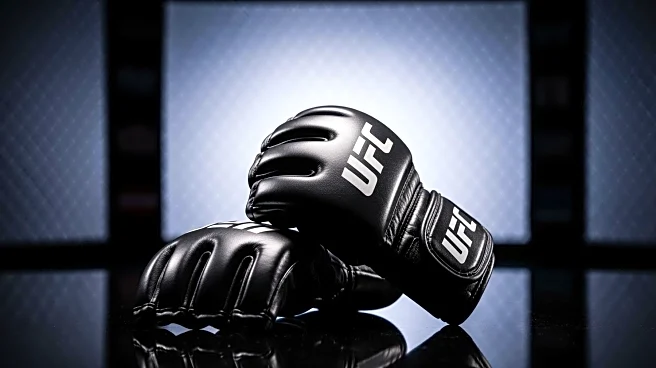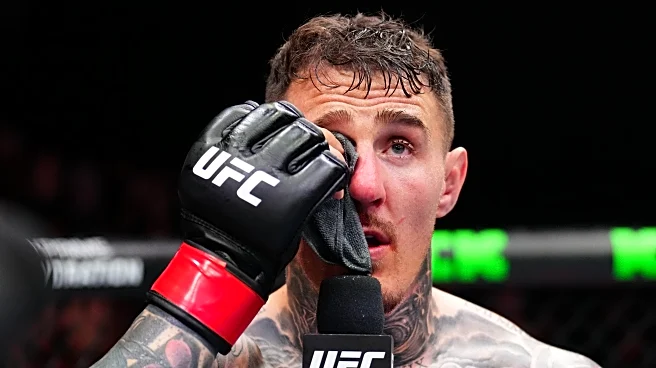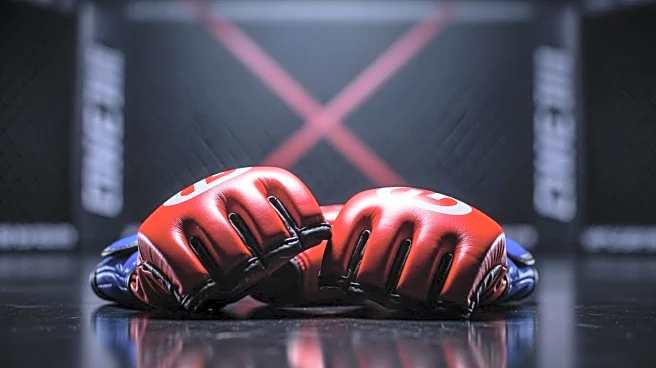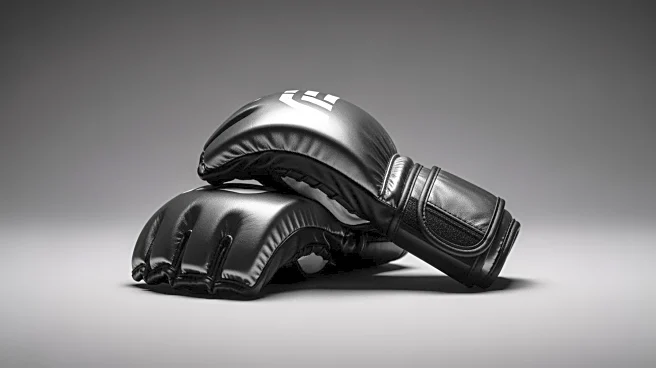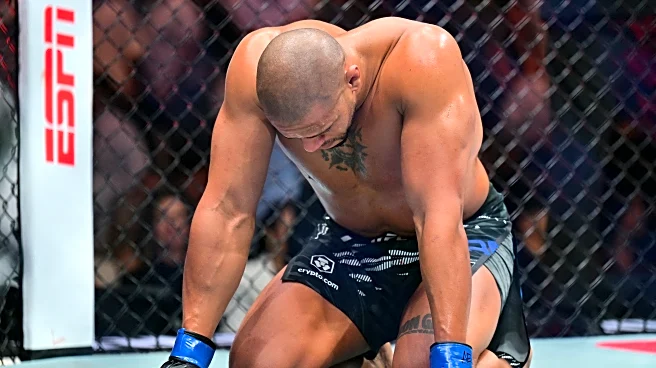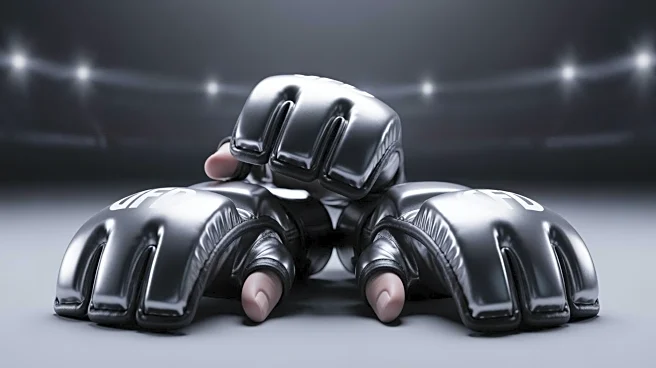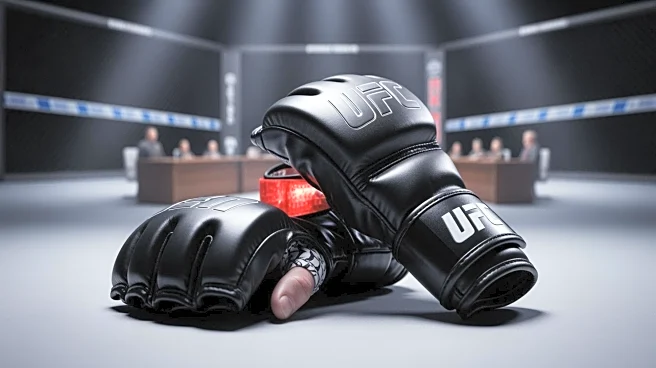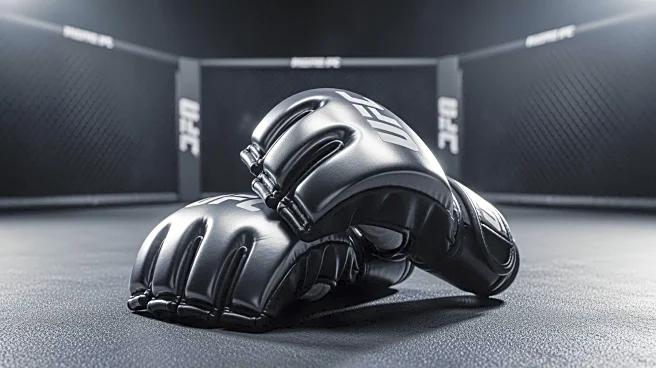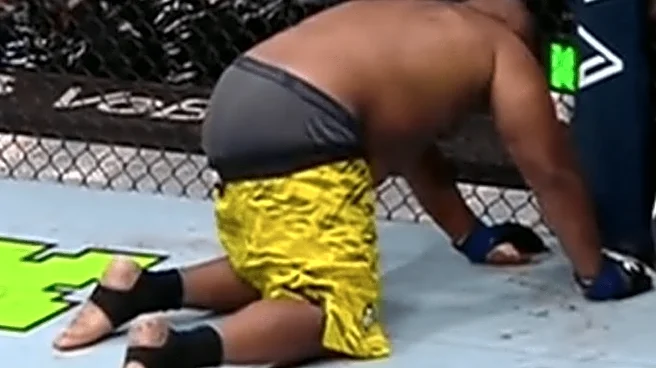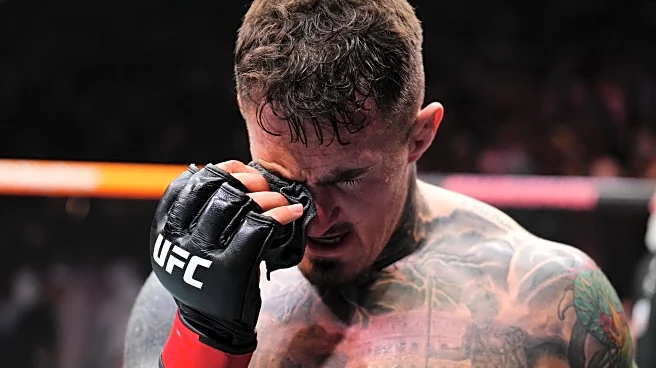What's Happening?
The UFC heavyweight title bout between Tom Aspinall and Ciryl Gane concluded with a no contest (NC) decision, marking only the second time in UFC history that a championship fight ended this way. The incident
occurred during the first round when Ciryl Gane inadvertently poked Tom Aspinall in the eye, rendering Aspinall unable to continue the fight. This immediate declaration of a no contest is notable, as the previous instance involving Jon Jones and Daniel Cormier was decided post-event due to a failed doping test by Jones. Tom Aspinall, who last fought in July 2024, holds a record of 15 wins, 3 losses, and one no contest. Ciryl Gane, with a record of 13 wins, 2 losses, and one no contest, last competed in December 2024.
Why It's Important?
The no contest ruling in a high-profile UFC title fight underscores the unpredictable nature of combat sports and the importance of safety regulations. This decision impacts the fighters' records and may influence future matchups and rankings within the heavyweight division. For Tom Aspinall, the incident halts his momentum following a knockout victory against Curtis Blaydes, while Ciryl Gane's record remains unchanged after his split decision win over Alexander Volkov. The ruling may prompt discussions on improving safety measures to prevent similar occurrences, affecting stakeholders such as fighters, promoters, and regulatory bodies.
What's Next?
The UFC may consider scheduling a rematch between Tom Aspinall and Ciryl Gane to resolve the title contention. Both fighters will likely undergo medical evaluations to ensure their readiness for future bouts. The incident may lead to increased scrutiny on fight safety protocols, potentially influencing rule changes or additional training for referees to handle similar situations. Stakeholders, including UFC officials and fans, will be watching closely for announcements regarding the fighters' next steps and any adjustments to the heavyweight division rankings.
Beyond the Headlines
The no contest decision raises questions about the ethical and procedural aspects of combat sports. It highlights the need for clear guidelines on handling accidental fouls and the role of referees in ensuring fighter safety. The incident may also spark debates on the adequacy of current protective gear and the potential for technological innovations to enhance safety. Long-term, this could lead to shifts in how fights are officiated and the development of new standards within the sport.


